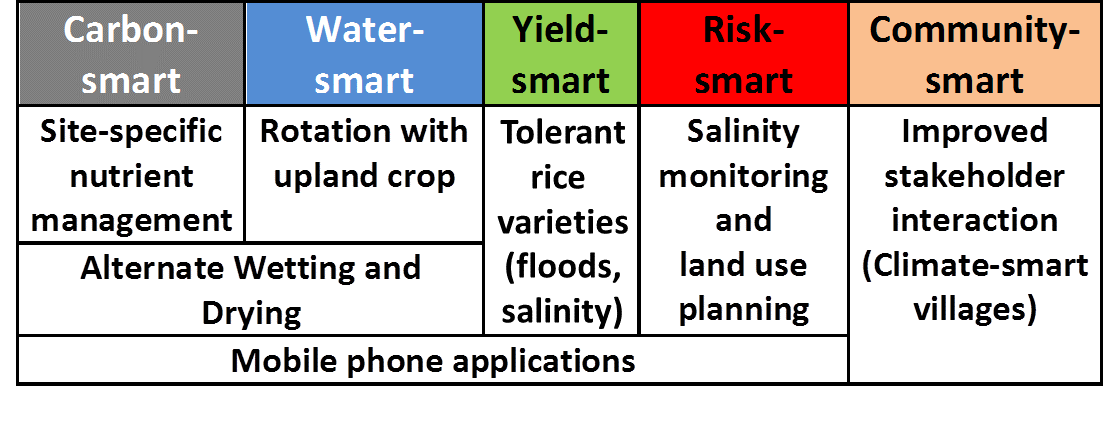Background
The Mekong Delta is Vietnam's main rice area and accounts for half of annual rice production. Use of rice land in the delta is divided into agro-hydrological zones controlled by flood duration and depth, water availability, and salinity regimes. Over the last 30 years, Vietnamese farmers have been adapting to changing environmental conditions by diversifying and modifying their production systems and water management. But recent and forecasted agro-hydrological changes threaten the viability of these farming and social systems and, subsequently, food security within Vietnam as well as rice-importing countries. The main constraints to farmers' ability to adapt to the new hydrological regime are availability of suitable cultivars, soil nutrient management options, insufficient knowledge of potential harm from acid sulphate soil inundation, and planning tools.
The CLUES project (Climate change affecting land use in the Mekong Delta: Adaptation of rice-based cropping systems) builds on core work that has been undertaken by the International Rice Research Institute and its Vietnamese and Australian research partners - encompassing improved resilience in rice production and numerous nutrient-cycling projects in the region. The project is designed to increase the adaptive capacity of rice production systems in the Mekong Delta Region (MDR), and its overarching objective is to provide farmers and management agencies with technologies and knowledge that will improve food security in the Mekong Delta.
Relationship to CSA
The mega-deltas of Asia are among the most vulnerable environments to climate change because these low-lying areas are directly exposed to impacts of sea level rise. The land use in the Mekong Delta as well as other deltas in the region is dominated by rice production. While no other crop can grow under water-logged conditions, increasing sea levels will aggravate salinity intrusion and flooding risks. Decrease in rice production in MRD will not only affect local food security, but also the economic development of Vietnam as well as the global rice trade.
The resultant approach for rice-based agriculture in the MRD encompasses a range of CSA components:

Impact and lessons learned
The complex interaction of climate change impacts in delta regions requires comprehensive approaches on adaptation covering many disciplines related to land use. Adaptation can be based on direct and indirect impacts on the hydrology of the delta. Thus, adaptation options have to be specified for the different agro-hydrological zones of the delta.